Eleven top industry suppliers share their cutting-edge solutions, valuable insights and what’s next for a wide variety of invasive species. We also want to hear from our pest management professional (PMP) readers: What invasive species are you encountering more frequently these days, and what are you doing about them? Email us at pmpeditor@northcoastmedia.net.
AMGUARD

By Dr. Charles Silcox
Product Development Manager
RECENT INNOVATIONS: The spotted lanternfly (Lycorma delicatula, or SLF) is an invasive insect that was first reported in the United States in Berks County, Pa., in 2014. This insect is indigenous to parts of China and Vietnam and has spread invasively to Japan, Korea and the United States. It has currently been recorded in 18 states – primarily in the Northeast, mid-Atlantic and Midwest regions.
AMGUARD markets two contact and residual insecticide products that are effective at controlling SLF nymphs and adults. Both Avesta CS, which contains lambda-cyhalothrin, and Wisdom TC Flowable, which contains bifenthrin, must be diluted with water and may be applied in landscaped areas around residential, institutional, public, commercial and industrial buildings. The applications should target the nymphs and adults as a direct contact application. Treating surfaces of plant material, tree trunks, rocks and manmade structures where these pests congregate or have been seen also will provide control for two weeks or more, depending on local conditions.
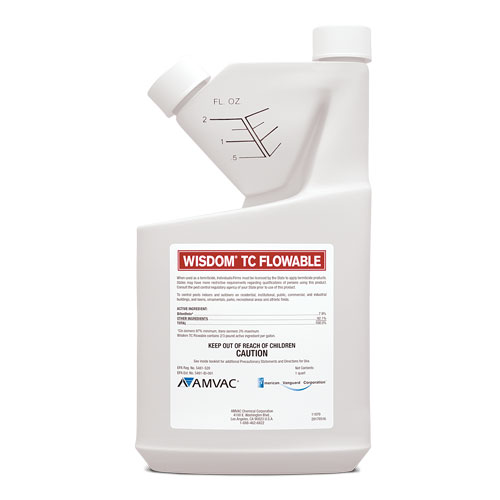
AMGUARD also is a leader in the development and marketing of low-toxicity active ingredients (AI) that are exempt from registration because they are in the U.S. Environmental Protection Agency’s (EPA’s) 25(b) category, considered minimum risk through the Federal Insecticide, Fungicide and Rodenticide Act (FIFRA). We currently have two products under development that could be effective against SLF and other invasive insect pests, as well as many additional common landscape pests.
PREDICTIONS: Invasive insects are here to stay, and it is safe to say that more are on the way.
Arkion Life Sciences
By Tessa Bergefurd
Sales and Marketing Specialist
RECENT INNOVATIONS: Ticks seem to be out in full force this year, and many of them, including the lone star (Amblyomma americanum) and Asian longhorned (Haemaphysalis longicornis) species, are invasive to the United States.

Because of the recent increase in tick pressure across the country, Arkion Life Sciences developed and trademarked Eraditick. Its AIs, including cinnamon oil, clove oil and peppermint oil, create an effective formula that kills tick populations as a direct spray and residual insecticide.
In addition, Stop the Bites!, a natural, 25(b)-exempt product that kills both mosquitoes and ticks, has been in Arkion’s product lineup for several years with tremendous success. Third-party studies show Stop the Bites! has a 100 percent knockdown of mosquitoes and ticks within the first 24 hours, along with an outstanding residual of up to 28 days for mosquitoes. It also stands out because of its pleasant smell and reputation for zero phytotoxicity reports or equipment breakdown reports.
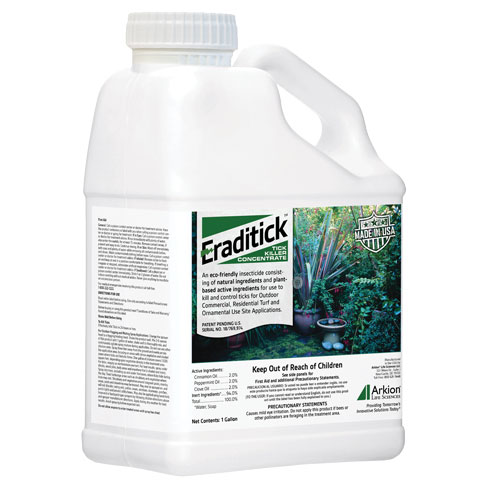
PREDICTIONS: In 2025, both tick species are projected to expand across the United States. The lone star tick already is known for spreading ehrlichiosis and possibly triggering red meat allergies via Alpha-gal syndrome. The Asian longhorned tick is multiplying rapidly thanks to its ability to reproduce without mating. This tick can also infest livestock in large numbers. Without effective control, the spread of both species may overwhelm current management strategies, making natural products like Eraditick and Stop the Bites! increasingly important for PMPs to add to their list of solutions.
BASF

By Desiree Straubinger, BCE, CP-FS
Technical Services Representative, Professional & Specialty Solutions
RECENT INNOVATIONS: The Joro spider (Trichonephila clavata) is an arachnid native to East Asia that was likely introduced into the Southeastern United States through shipping containers. These spiders are known for their impressive webs, which can span several feet in diameter and are often woven in high, open areas such as tree branches and eaves. They primarily feed on insects, including flies and mosquitoes, playing a beneficial role in controlling pest populations. Due to their large bodies and web size, however, most property owners would rather not have them on their property.
The latest innovation from BASF, Ridesco WG Insecticide, stands out as an excellent solution in combating the invasive Joro spider as well as other spider species. The quick-release formulation ensures rapid, visible control over a wide range of pests. Research studies have demonstrated Ridesco WG Insecticide’s fast knockdown of adult spiders, with no revival or detoxification even after several days. This result provides immediate, visible relief to customers without the worry of repopulation or reproduction once the treatment is applied. Ridesco WG Insecticide’s dry formulation offers easy mixing, handling, storage and transport, and its flexible label integrates seamlessly into pest control programs for diverse pest issues.
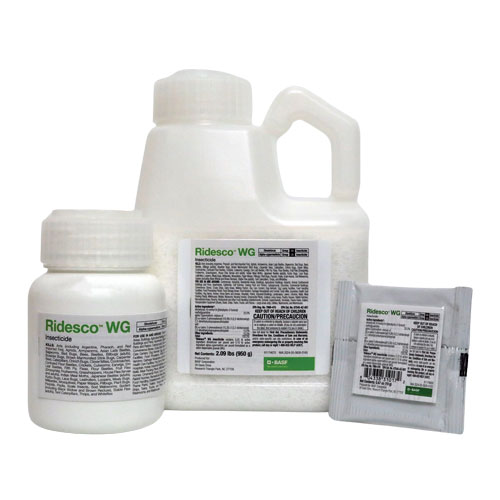
PREDICTIONS: The invasive species segment is anticipated to experience significant changes over the next five years. With increasing global trade and travel, the introduction and spread of non-native species are expected to continue and even increase. Advancements in pest control technologies, such as Ridesco WG Insecticide, offer hope for managing these invasive populations effectively.
BASF predicts that the demand for innovative pest control solutions will rise as awareness of the ecological and economic impacts of invasive species grows. BASF is committed to investing in research and development to provide effective products to meet these demands.
Bird B Gone, a Pelsis Group brand
By Anna Iversen, BCE
U.S. Technical Director

RECENT INNOVATIONS: The house sparrow (Passer domesticus) is an invasive species that was originally brought into Brooklyn, NY, in 1851 to help control linden moth caterpillars (Erannis tiliaria) — but it soon exploded in population. Though numbers have dipped in some areas, they’re still classified as invasive and are one of the few bird species not protected under the U.S. Migratory Bird Treaty Act.
At Bird B Gone, a Pelsis Group brand, we offer several tools designed to mitigate house sparrow issues, including:
- Avian Block (pictured) and Bird-Out use methyl anthranilate (MA) to repel house sparrows
- Spectrum V uses a multi-sensory deterrent — visual, tactile and olfactory — to disrupt bird behavior
- Netting works well for excluding house sparrows from nesting areas like vents, eaves and rafters
- Bird Jolt Flat Track prevents house sparrows from landing on ledges
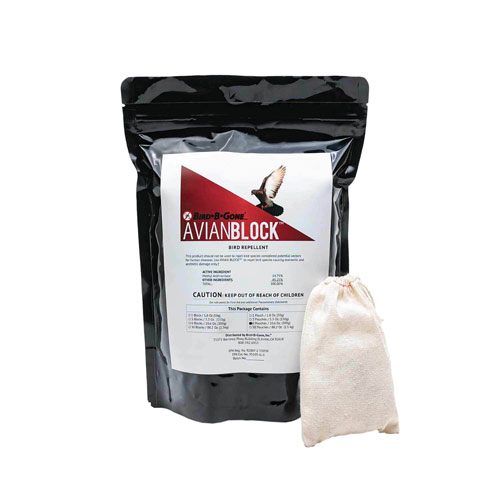
PREDICTIONS: Given the growing public concern about bird-related health risks — most notably, avian flu — we expect demand for non-lethal, sparrow-focused controls to grow. As the pest management industry embraces digital tools, we’re likely to see innovations in monitoring, detection and prevention specifically targeting invasive bird populations.
When these digital and mechanical solutions come together, such as smart monitoring with exclusion and repellents, they’ll give PMPs powerful, next-generation ways to protect both structures and people from invasive species like the house sparrow.
Control Solutions Inc.

By Heather Patterson
Technical Service Manager
RECENT INNOVATIONS: Red imported fire ants (Solenopsis invicta, or RIFA) are among some of the most aggressive and damaging invasive species in the world. Their ability to harm ecosystems, disrupt agricultural operations and disturb recreational and residential landscapes make them a top priority for PMPs. In addition to the undesirable mounds they build, RIFA can damage equipment, displace native wildlife and pose a serious health risk due to their aggressive stinging behavior.
To manage this invasive pest, broadcast bait applications remain one of the best and most effective control methods. Control Solutions Inc. is proud to offer Doxem Plus Fire Ant Bait — your new season-long fire ant solution.
Delivering three months of protection, applications of Doxem Plus will crash the colony. After applying the granules over the treatment area, foraging RIFA will collect the bait and take it back to the nest. There, it is shared through trophallaxis — the social feeding behavior that enables the bait and AIs to move deep into the nest, including the queen, to achieve colony-level control.
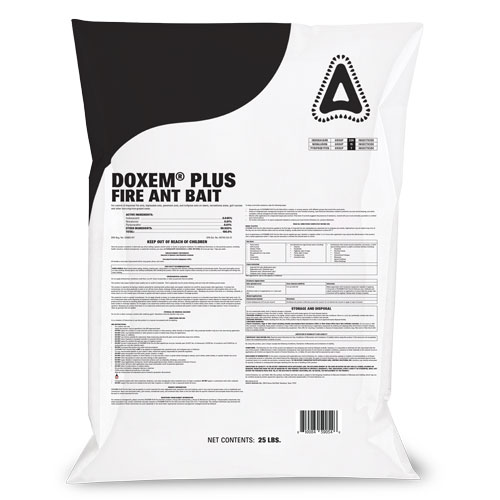
To protect treated areas with Doxem Plus Fire Ant Bait, it’s recommended to first apply a broadcast application in the spring, followed by a second application in late summer or early fall. Doxem Plus also can be used as an individual mound treatment for targeted control in sensitive areas or places where only a few mounds are found.
PREDICTIONS: The spread of invasive species, whether through new introductions or the expanding range of existing populations, is a serious concern across the globe. Even here in the United States, the RIFA’s range continues to grow. As of May 27, 2025, the Virginia Department of Agriculture and Consumer Services expanded its RIFA quarantine zone, adding six counties and four independent cities to the state quarantine map. As these aggressive ants continue to establish in new areas, fire ant baits will remain an important tool for managing their colonies, nests and infestations.
Envu
By Dr. Alvaro Romero
Entomologist and Technical Services Manager, Professional Pest Management

RECENT INNOVATIONS: Envu is committed to customer-centric innovation, and our latest expansions demonstrate that. Our current mosquito control approach targets invasive species such as yellow fever (Aedes aegypti), Asian tiger (A. albopictus) and Southern house (Culex quinquefasciatus). We combine behavior-based tools with low-impact insecticides to address diverse breeding sites and mosquito behaviors.
New from Envu is the patented Barricor Essential Mosquito Control, a FIFRA 25(b)-exempt, essential oil-based adulticide. It can be applied to vegetation, exterior surfaces and resting areas — ideal for environmentally sensitive locations and as part of an integrated mosquito management (IMM) program. Importantly, Barricor Essential Mosquito Control is designed not to harm bees, supporting pollinator-friendly practices.
The In2Care Mosquito Station, meanwhile, leverages mosquito behavior to spread pyriproxyfen to breeding sites and infect adults with a slow-acting fungal pathogen (Beauveria bassiana). It’s especially effective against Aedes spp. mosquitoes breeding in small, hidden containers.
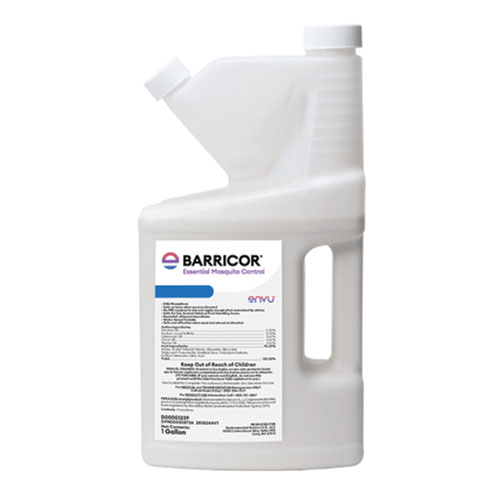
PREDICTIONS: We expect strong growth in this segment as Asian tiger and Southern house mosquitoes continue expanding due to climate change, urbanization and global movement. The possible expansion of other mosquito species, including vectors not yet well-established in some regions, will likely increase control needs. Over the next five years, we anticipate:
- A broader adoption of IMM strategies
- Greater interest in botanical and low-impact solutions like Barricor Essential Mosquito Control
- Wider use of autodissemination tools such as the In2Care Mosquito Station
- Stronger focus on education and community involvement
As pests and markets evolve, Envu remains committed to delivering sustainable, effective solutions for evolving mosquito control challenges. By partnering with trusted distributors, customers and industry leaders, we will continue advancing mosquito control solutions that protect public health and address the industry’s evolving needs.
J.T. Eaton
By Isabelle Lucero
Education and Compliance Officer

RECENT INNOVATIONS: Let me open your eyes to an invasive species that has been flying under the radar for far too long: the Turkestan cockroach (Blatta lateralis). With its many common names, including “red runner,” and its use as a feeder species for exotic pets, you might be wondering what is new about this so-called “common” cockroach. Well, it is rapidly expanding its range and coming to a home near you. Luckily, J.T. Eaton has you covered with the new Ultimatum Roach Gel Bait from global insecticide leader Mylva.
Ultimatum Roach Gel Bait targets multiple cockroach species with long-lasting palatability and efficacy thanks to its hygroscopic (moisture-absorbing) matrix and AI of 0.05 percent fipronil. This bait is a great addition to your gel bait rotation, and it has arrived just in time to combat Turkestan cockroaches.
Once believed to be a pest of the Southwest exclusively, this species is now found throughout the country. The four main reasons for its expansion are:
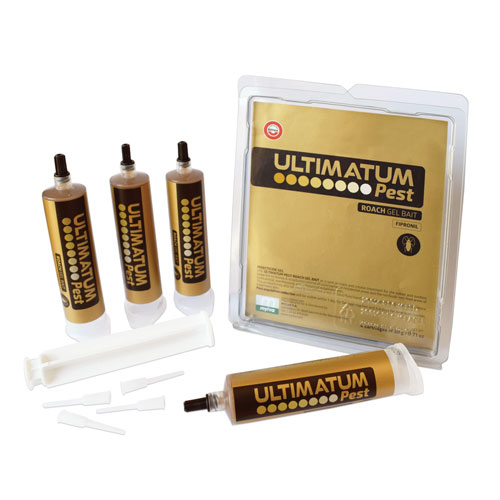
- The female Turkestan cockroach resembles an Oriental cockroach (B. orientalis), leading to frequent misidentification.
- Climate change allows the species to thrive in areas previously too cold for them.
- When used as feeder insects, they can be improperly disposed of or escape.
- They are known to mature faster and lay more eggs than other major cockroach pest species, leading to increased reproduction rates and population sizes.
Although Turkestan cockroaches can pose a serious threat to our health and resources, we have a great solution in Ultimatum Roach Gel Bait. With its easy-to-use, mess-free applicator, you can place bait precisely to target where Turkestan cockroaches have been seen, including in sensitive environments.
PREDICTIONS: Turkestan cockroaches will continue to expand their range. They can even displace Oriental cockroaches in many environments. We predict they will continue to become a major economic pest, and attention must be paid to their management and resistance levels.
Neogen
By Andrew Fisher, BCE, PHE
Business Unit Specialist

RECENT INNOVATIONS: Controlling invasive pests like the brown marmorated stink bug (Halyomorpha halys) and the multicolored Asian lady beetle (Harmonia axyridis) begins with a focus on the exterior perimeter of buildings. Effectively managing these invasive pests can be challenging, requiring precise timing and the right product selection. Because some invasive species also are overwintering pests, they tend to invade homes and other structures during specific seasons in search of warmth.
Neogen is proud to offer SureKill Evolve SC as a solution in combatting invasive pests like the brown marmorated stink bug and the multicolored Asian lady beetle. This formulation is capable of withstanding outdoor elements while delivering effective and long-lasting results. With a residual of up to 90 days, SureKill Evolve SC provides an extended defense against these pests. The AI, deltamethrin, is well-known for its effectiveness against a variety of invasive insects and many other overwintering pests. The microcrystal suspension concentrate allows the product to adhere efficiently to surfaces, maximizing contact and exposure for optimal pest control. Its broad label allows for applications to the structure through spot and crack-and-crevice applications, along with both exterior and interior usage. By incorporating SureKill Evolve SC into their pest management strategies, PMPs can significantly improve their chances of protecting properties from these pests.
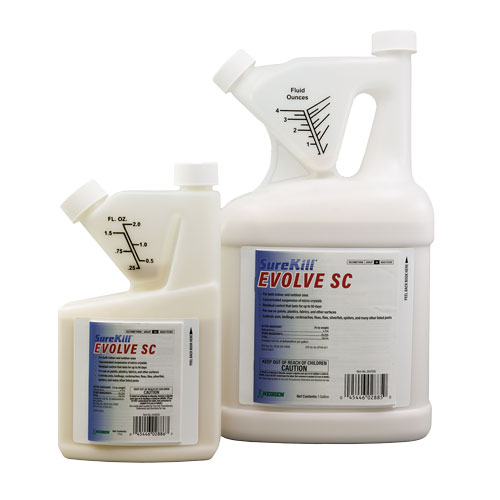
PREDICTIONS: Looking ahead, Neogen anticipates increased invasive pest activity because of changes in weather patterns that allow broader expansion in regions and increased introduction challenges with the global importing of commodities. Implementing timely exterior treatments is the most effective measure to reduce pest pressure in structures. Strategically applying both liquid and dust products around entry points while also providing exclusion work will be essential to reducing pest populations and safeguarding living spaces from these invasive invaders.
Nisus
By Dr. Jamel Sandidge, BCE
National Director of Technical Services

RECENT INNOVATIONS: Sometimes, the best defense is a good offense. When it comes to urban pest species, their biology, behavior, life history and genetics provide all the necessary clues to develop an effective response. However, with invasives, research on these factors, as well as pesticide efficacy, is often unknown.
When a species is introduced into a new area, it is usually through small introductions of a few individuals. This small initial population means their genetic makeup is nearly identical. When it comes to insects like ants, that genetic similarity leads to tolerance of neighboring colonies that would normally fight it out to secure their turf and to the development of supercolonies.
However, one fact remains true: Ants love sweet liquids and constantly search for this food source to support a growing colony. When invasive ants don’t respond to gel bait, seem to evade chemical barriers and elude granular bait, adding Nisus’ DominAnt Liquid Ant Bait (pictured) or DominAnt 1% Liquid Ant Bait will draw out even the most resilient colonies. Because of its slower-acting nature, DominAnt provides time for worker ants to spread the bait throughout the entire colony — even supercolonies with multiple queens — before they know what hit them.
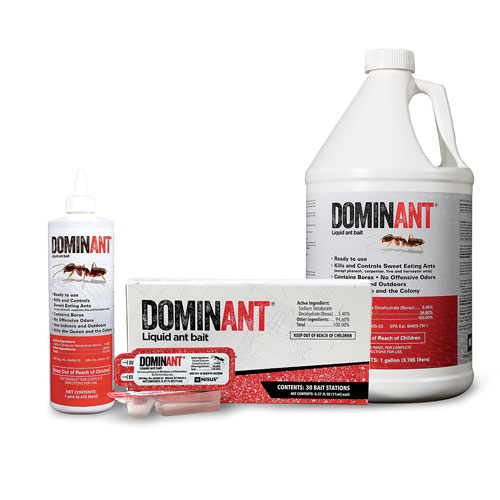
PREDICTIONS: As more and more invasive species establish themselves outside of their native ranges, we see a major need to develop a closer relationship between university researchers and the pest management community. Without their efforts to examine biology and the changes in behavior or life history that occur in new regions and their dedication to continuously test old, new and emerging products for efficacy to determine the best course of action, the industry will find it increasingly difficult to control rapidly spreading invasive species.
Rockwell Labs
By Dr. Cisse Spragins
Founder and CEO

RECENT INNOVATIONS: Rockwell Labs offers several products that are effective tools for the management of invasive ant species. InVict Blitz, for example (pictured), features 0.5 percent imidacloprid on an exclusive, highly palatable matrix that features a heavy dose of both carbs and proteins, including the invertebrate proteins that ants require. The effectiveness, use rate and cost point are well-aligned with the treatment of megacolony ants such as Argentine ants (Linepithema humile), tawny crazy ants (Nylanderia fulva) and big-headed ants (Pheidole megacephala) that form multiqueen colonies. These ants also can be attracted to sweet liquid bait and may consume large volumes.
InTice Thiquid Ant Bait is a super-sweet bait with 5 percent borax. It is labeled to be sprayed onto surfaces, which is particularly effective for another invasive species: white-footed ants (Technomyrmex albipes).
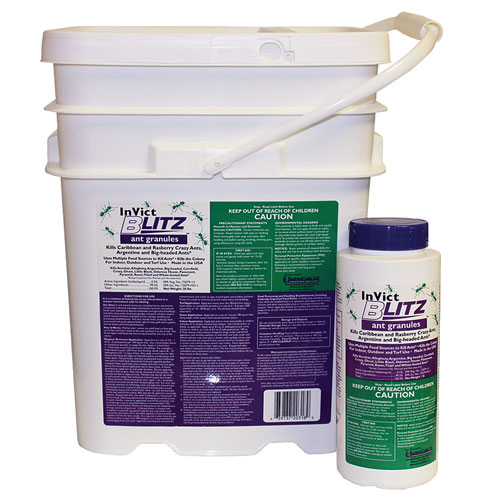
InTice Rover Ant Bait is specially formulated to be attractive to rover ants (Brachymyrmex patagonicus) that have spread across Texas and other Gulf states. In addition, InVict AB gel bait, with 0.05 percent abamectin, contains a sweet oil and protein bait matrix that is unmatched against pharaoh ants (Monomorium pharaonis).
Lastly, EcoVia 3-in-1 is our 25(b)-exempt botanical formulation that can be used on plants, including those grown for food and organic production.
PREDICTIONS: We don’t expect any lessening of pressure from invasive species. And history shows that once these pests find their way to our shores, they tend to remain. With the global movement of people and products, any species in the world that can survive in our climate conditions could become established here.
Syngenta
By Dr. Lisa Eppler
Technical Services Manager, Professional Pest Management

RECENT INNOVATIONS: Advion Insect granular bait controls invasive and non-invasive ant species, as well as other pests such as cockroaches, crickets and silverfish, with a highly attractive bait matrix for maximum consumption. It features indoxacarb with the targeted, trademarked MetaActive effect, offering the targeted control and reliability of the trusted Advion brand.
The 1-pound shaker bottle is ideal for perimeter band or spot treatments, while the 12-pound bag helps meet higher-volume needs.
The industry needs new chemistries for the urban pest control market to not only tackle resistance in pests such as cockroaches but also provide more targeted solutions with flexible uses and favorable safety profiles. Keep an eye out for PLINAZOLIN technology coming soon from Syngenta, which will be a significant and new AI and mode of action in the pest control market. It will be a nonrepellent, non-pyrethroid chemistry offering broad-spectrum pest control, application flexibility and resistance management.
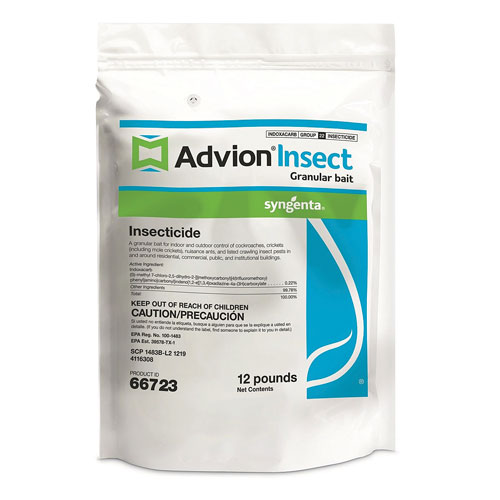
PREDICTIONS: PMPs likely will need to adapt to new technologies and continue their education to stay up to date with evolving tools and techniques. The industry is focusing development on more species-specific baits targeting particular difficult-to-control ant species; longer-lasting, weather-resistant formulations for outdoor use; and baits with multiple AIs. There also are many advancements coming in the field of artificial intelligence-powered cameras and sensors to help detect and identify ant species, as well as data analytics tools for predicting ant infestations and optimizing treatment schedules.
Leave A Comment